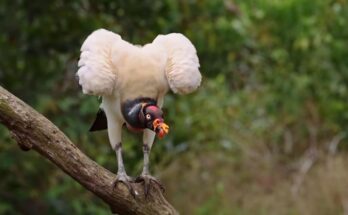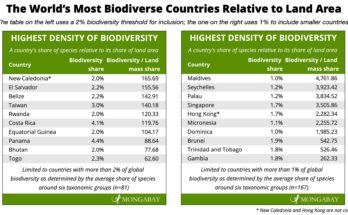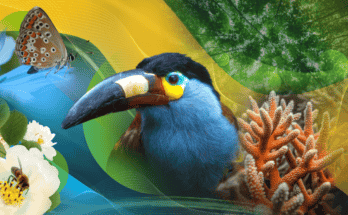The rarest animals in the world are incredibly unique. They are often hard to find and few in number.
Discovering these rare creatures can be fascinating. From dense rainforests to deep oceans, these animals live in diverse habitats. Understanding their rarity helps us appreciate the planet’s biodiversity. Many of these animals face the threat of extinction due to habitat loss and human activities.
Conservation efforts are crucial to their survival. In this blog post, we will explore some of the rarest animals on Earth. Each one has a unique story and plays a vital role in its ecosystem. Join us as we delve into the world of these extraordinary creatures. Let’s learn why they are so special and what we can do to protect them.

Introduction To Rare Animals
Rare animals capture our imagination. They are unique and often mysterious. These animals face many threats. They are at risk of extinction. Learning about them helps us understand their importance.
Importance Of Biodiversity
Biodiversity is the variety of life on Earth. It includes all plants, animals, and microorganisms. Each species plays a role in their ecosystem. Rare animals are a part of this biodiversity. They help keep ecosystems balanced.
Healthy ecosystems provide many benefits. They support clean air and water. They help pollinate crops. They also offer natural resources. Losing rare animals weakens these systems. Protecting them is vital for a healthy planet.
Conservation Challenges
Conserving rare animals is not easy. There are many challenges. One major challenge is habitat loss. Humans clear forests and grasslands for farming and urban development. This destroys the homes of rare animals.
Another challenge is poaching. Hunters target rare animals for their skins, bones, or other body parts. This illegal trade is a big threat. Climate change also affects rare animals. Changing temperatures and weather patterns disrupt their habitats.
Conservation efforts need support. Governments, organizations, and individuals must work together. Protecting rare animals requires funding, education, and strict laws. It also needs community involvement. Everyone has a role to play.
Amur Leopard
The Amur Leopard is one of the rarest big cats in the world. This beautiful animal is known for its stunning coat and remarkable agility. Sadly, it’s also critically endangered.
Habitat And Distribution
The Amur Leopard inhabits the temperate forests of the Russian Far East. It can also be found in small pockets in China. This elusive cat prefers dense forests with thick underbrush.
These regions provide ample cover and prey. The total population is estimated to be fewer than 100 individuals in the wild.
| Region | Population |
|---|---|
| Russian Far East | 60-70 |
| China | 10-20 |
Conservation Efforts
Conservation efforts are crucial for the survival of the Amur Leopard. Various organizations are working to protect this rare animal.
- Anti-poaching Patrols: Patrolling teams monitor the forests to prevent illegal hunting.
- Habitat Restoration: Efforts are made to restore and preserve their natural habitat.
- Breeding Programs: Captive breeding programs aim to increase population numbers.
These initiatives are showing positive results. The population, although small, has seen a slight increase in recent years.
Vaquita Porpoise
The Vaquita Porpoise is one of the world’s rarest marine mammals. Found only in the northern part of the Gulf of California, Mexico, this small porpoise is critically endangered. Its population has declined rapidly due to human activities. With less than 10 individuals left in the wild, the vaquita faces a high risk of extinction.
Endangered Status
The Vaquita Porpoise is listed as critically endangered by the International Union for Conservation of Nature (IUCN). The latest surveys suggest fewer than 10 vaquitas remain. This makes it one of the rarest animals on the planet. Conservationists are working hard to save this species. Efforts include monitoring the population and enforcing stricter fishing regulations.
Threats And Protection
The biggest threat to the vaquita is illegal fishing. They often get caught in gillnets meant for catching totoaba fish. Totoaba swim bladders are highly valuable and are sold on the black market. The vaquitas get trapped and drown, unable to escape the nets. This has led to their rapid decline.
To protect the vaquita, several measures have been put in place. Mexico has banned the use of gillnets in the vaquita’s habitat. Conservation groups patrol the area to ensure compliance. There are also awareness campaigns to educate local communities about the vaquita’s plight. These combined efforts aim to prevent the extinction of this rare species.

Javan Rhino
The Javan Rhino is one of the rarest large mammals on Earth. Also known as the Sunda rhinoceros, it is a critically endangered species. This rhino species is known for its single horn and grey skin. The Javan Rhino is shy and prefers dense lowland rainforests.
Population And Range
The Javan Rhino population is alarmingly low. As of recent estimates, fewer than 75 individuals remain. They are primarily located in Ujung Kulon National Park in Indonesia. Their range has drastically reduced over the years due to habitat loss and poaching.
| Region | Population |
|---|---|
| Ujung Kulon National Park | < 75 |
Conservation Measures
Efforts to save the Javan Rhino are ongoing. Several conservation measures have been implemented. These include:
- Anti-poaching patrols: Teams guard the rhinos against poachers.
- Habitat restoration: Projects focus on restoring and protecting their natural habitat.
- Community involvement: Local communities participate in conservation efforts.
- Research: Scientists study their behavior and health to improve conservation strategies.
Conservationists aim to increase the Javan Rhino population. They work tirelessly to ensure this species does not go extinct. Every effort counts in preserving these magnificent creatures.
Sumatran Orangutan
The Sumatran Orangutan is one of the rarest animals in the world. Found only in Sumatra, Indonesia, these great apes are critically endangered. Their distinct red fur and expressive eyes make them unique. They play a crucial role in the rainforest ecosystem. Understanding their behavior and habitat is key to their survival.
Behavior And Ecology
Sumatran Orangutans are solitary creatures. They mostly live alone or in small groups. They spend most of their time in trees. Their long arms and strong hands help them swing from branch to branch. They eat fruits, leaves, and insects. They use tools to help them get food. They are very intelligent and can learn new skills.
Habitat Preservation
Their habitat is shrinking fast. Deforestation and palm oil plantations are major threats. Efforts are being made to protect their forest home. Conservation groups work to stop illegal logging. They also help restore damaged areas. Protecting the rainforest is vital for their survival. Every tree saved is a step towards saving the Sumatran Orangutan.
Hawksbill Turtle
The Hawksbill Turtle is one of the rarest animals on earth. Known for its beautiful shell, this turtle faces many threats. Its population has declined sharply. Conservation efforts are crucial to save this amazing creature.
Life Cycle
Hawksbill Turtles begin life as tiny eggs. Females lay eggs on sandy beaches. After about two months, the eggs hatch. The baby turtles, called hatchlings, make their way to the sea. Many do not survive this journey. Predators are a big threat.
Once in the ocean, the turtles grow and mature. They face many dangers, including sharks. It takes about 20 years for them to reach maturity. Adult Hawksbill Turtles return to the beaches to lay their own eggs. This cycle continues, but it is getting harder for them to survive.
Human Impact
Humans greatly impact Hawksbill Turtles. Many are hunted for their beautiful shells. These shells are used to make jewelry and other items. This hunting has greatly reduced their numbers. Pollution is another major problem. Plastic in the ocean can be deadly. Turtles can mistake it for food.
Coastal development destroys their nesting beaches. Without safe places to lay eggs, their numbers drop. Climate change also poses a threat. Warmer temperatures can affect their nesting sites. Conservation efforts are needed to protect these turtles. Every action counts.
Mountain Gorilla
The Mountain Gorilla is among the most endangered animals in the world. These majestic creatures live in the forested mountain regions of central Africa. They face many threats, including habitat destruction and poaching.
Social Structure
Mountain Gorillas live in family groups. Each group has one dominant male leader, known as the silverback. The silverback makes decisions for the group. Other members include females and their offspring. They share a strong bond and work together for survival. Communication in the group includes vocal sounds, gestures, and body postures.
Anti-poaching Initiatives
Many organizations work tirelessly to protect Mountain Gorillas. Anti-poaching initiatives are crucial. Rangers patrol the forests daily. They remove snares and traps set by poachers. Education programs teach locals about the importance of gorillas. These efforts help reduce poaching incidents. Conservation groups also work with governments. They aim to create policies that protect the gorillas’ habitat.
Saola
The Saola, often called the “Asian unicorn,” is one of the rarest animals in the world. This elusive creature was discovered only recently, and very little is known about it. Found in the Annamite Range of Vietnam and Laos, the Saola captivates scientists and wildlife enthusiasts alike.
Discovery And Rarity
The Saola was discovered in 1992. A team of scientists found it in Vietnam’s Vu Quang Nature Reserve. The discovery was groundbreaking because the Saola is so rare. Only a few individuals have been seen in the wild. This makes it one of the most mysterious animals on the planet.
Its rarity is due to its small population. Experts estimate that fewer than 100 Saolas exist today. The animal’s habitat is shrinking due to human activities. Deforestation and hunting are major threats. Conservationists are working hard to protect the Saola. Their efforts are crucial for the animal’s survival.
Survival Strategies
The Saola has several survival strategies. It is a shy and secretive animal. This makes it difficult for predators to find it. The Saola lives in dense forests, which provide cover. Its camouflaged coat blends with the surroundings.
It feeds on plants, mainly leaves, and small fruits. This diet is available year-round in its habitat. The Saola is also known for its seasonal movement. During the dry season, it moves to areas with more water. These strategies help the Saola survive in a challenging environment.
Conservation Success Stories
Conservation efforts have saved many rare animals from extinction. Dedicated teams work tirelessly to revive and protect endangered species. These stories highlight the power of human intervention.
Revived Populations
Several species have seen population boosts due to conservation. Here are some examples:
- Black-footed Ferret: Once thought extinct, now over 300 individuals live in the wild.
- California Condor: From 27 individuals in 1987 to over 400 today.
- Giant Panda: Increased from less than 1,000 to over 1,800.
These successes showcase how targeted actions can make a difference. Reintroduction programs, habitat restoration, and breeding programs have been crucial. The commitment of conservationists has paid off.
Ongoing Efforts
The fight to save rare animals continues. Many species still face threats. Ongoing efforts are vital to their survival. Here are some current initiatives:
| Species | Efforts |
|---|---|
| Sumatran Rhino | Breeding programs and anti-poaching patrols |
| Vaquita | Fishing net bans and protected marine areas |
| Amur Leopard | Habitat restoration and anti-poaching measures |
These efforts aim to ensure long-term survival. Conservationists work with local communities. They build sustainable practices and protect wildlife. The journey is challenging, but progress is being made.

Frequently Asked Questions
What Are The Rarest Animals In The World?
The rarest animals include the Vaquita, Javan Rhino, and Amur Leopard. These species are critically endangered and face numerous threats. Conservation efforts are crucial to their survival.
Why Are Some Animals Considered Rare?
Animals are considered rare due to factors like habitat loss, poaching, and climate change. These threats significantly reduce their population, leading to their endangered status.
Where Can Rare Animals Be Found?
Rare animals are often found in specific, isolated habitats. These include remote forests, oceans, and protected reserves. Conservation areas play a vital role in their preservation.
How Can We Help Protect Rare Animals?
We can protect rare animals by supporting conservation efforts. Avoiding products that harm wildlife and spreading awareness are also essential steps. Donations to wildlife charities make a big impact.
Conclusion
Discovering the rarest animals in the world is truly fascinating. These creatures remind us of nature’s diversity. We must protect their habitats to ensure their survival. Conservation efforts make a difference. Educate others about these rare species. Every small action helps.
Appreciate and respect wildlife. Our planet depends on it. Let’s cherish these rare animals. They are precious and irreplaceable. Together, we can make a positive impact.



